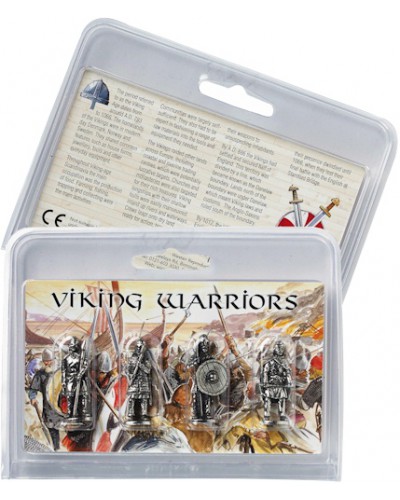Product Description: This set of 4 Viking Warrior figures, each measuring 4cm tall, are made from lead-free pewter. The four different figures in the pack are of Viking warriors with different, cloths, weapons and shields. The supplied information card is full colour with an image of a Viking raid on the front and has historical information on the reverse, together with additional images. The figures and card are held in a clear clam-shell pack.
Information: The period referred to as the Viking Age dates from around AD 793 to 1066. The homelands of the Vikings were in modern day Denmark, Norway and Sweden. They shared common features such as house forms, jewellery, tools and other everyday equipment.
Throughout Viking-age Scandinavia the main occupation was the production of food. Farming, fishing, trapping and collecting were the main activities.
Communities were largely self-sufficient. They also had to be expert in fashioning a range of raw materials into the tools and equipment they needed.
The Vikings raided other lands across Europe, including coastal and riverine trading centres, which were potentially lucrative targets. Churches and monasteries were also targeted for their rich treasures. Viking longships with their shallow hulls were easily manoeuvred inland up rivers and waterways. Crews leapt onto dry land ready for action, brandishing their weapons to unsuspecting inhabitants.
By AD 886 the Vikings had settled and secured half of England. This territory was divided by a line, which became known as the Danelaw boundary. Lands north of the boundary were under Danelaw, which meant Viking laws and customs. The Anglo-Saxons ruled south of the boundary.
By 1012, the Viking power in England had weakened and their presence dwindled until 1066, when they lost their final battle with the English at Stamford Bridge.

